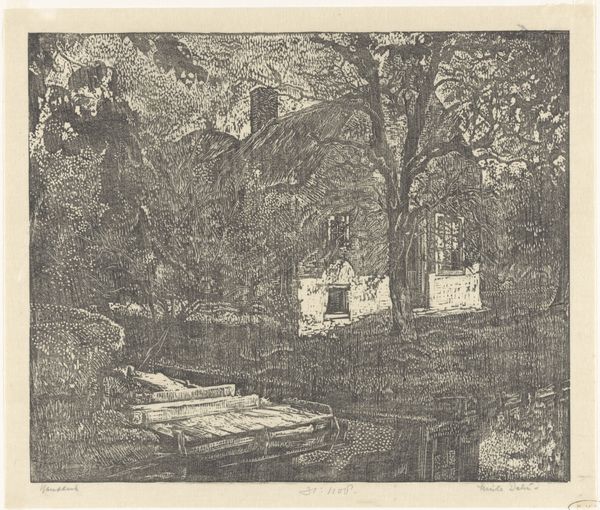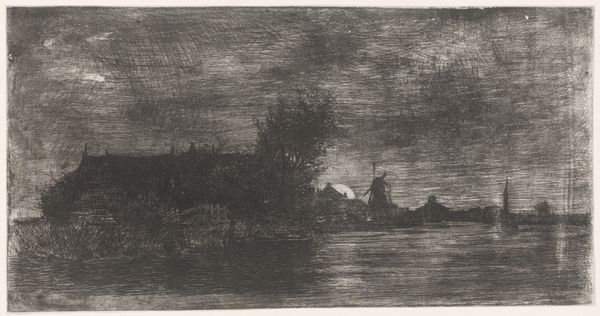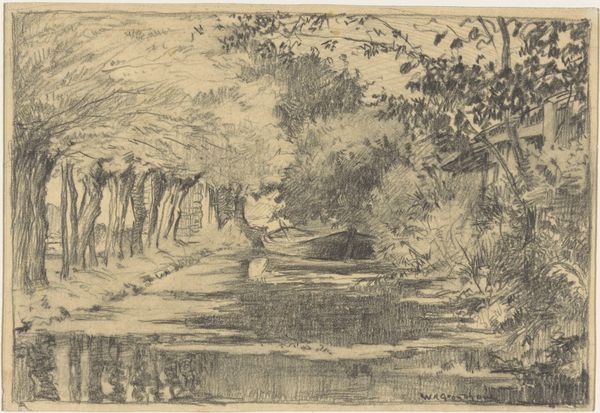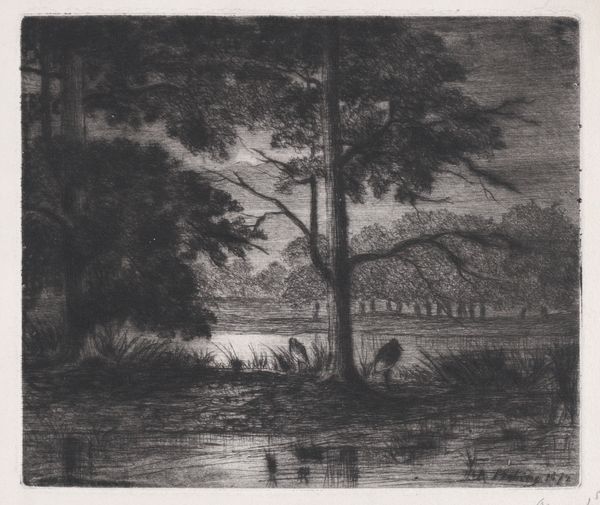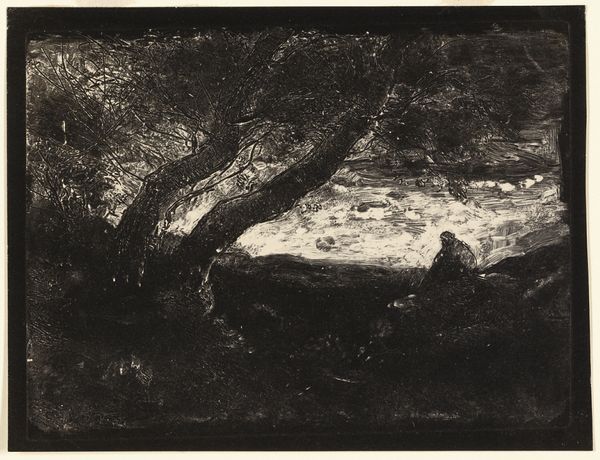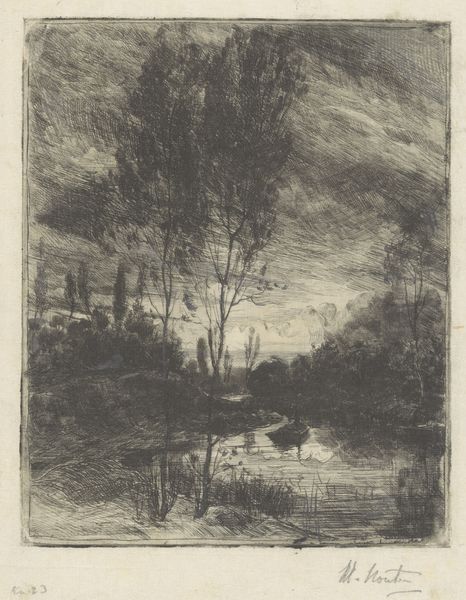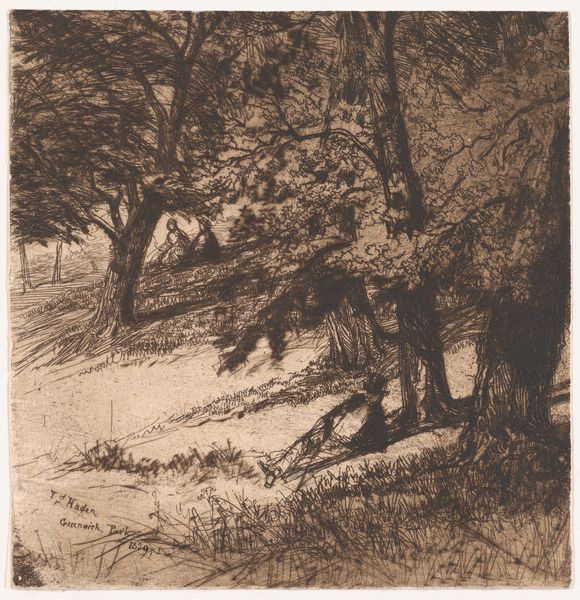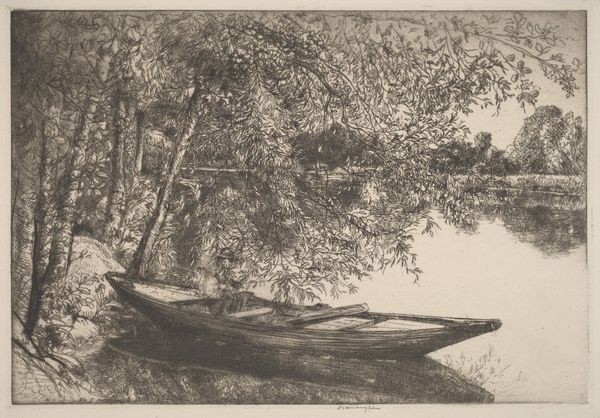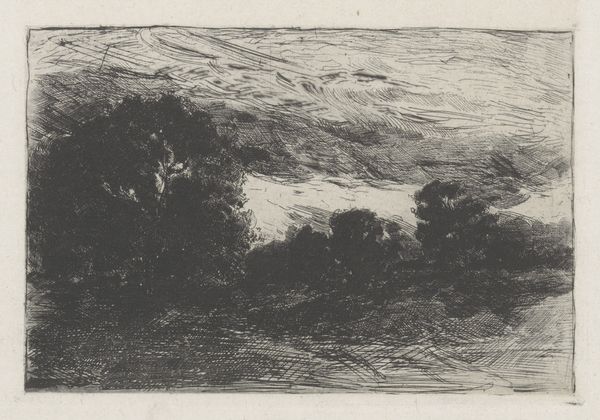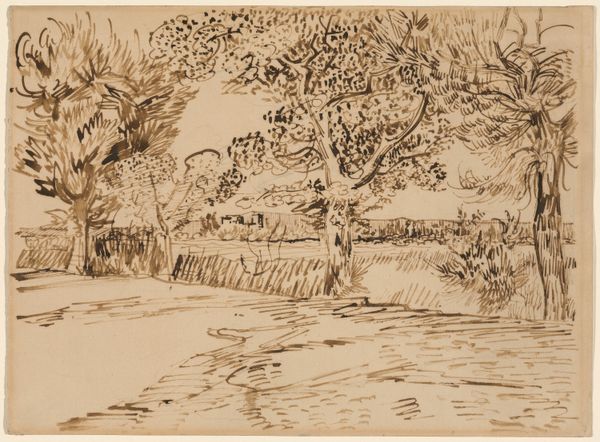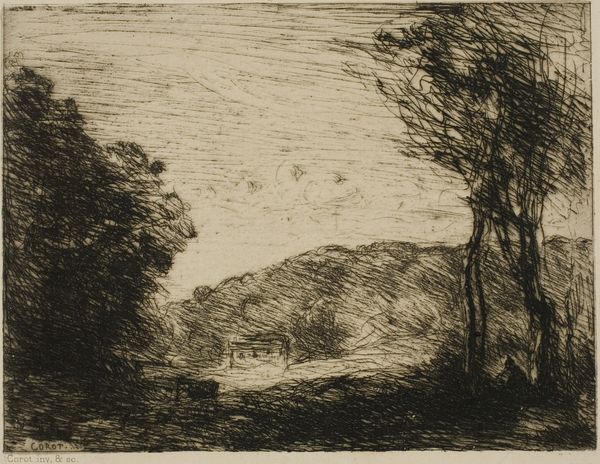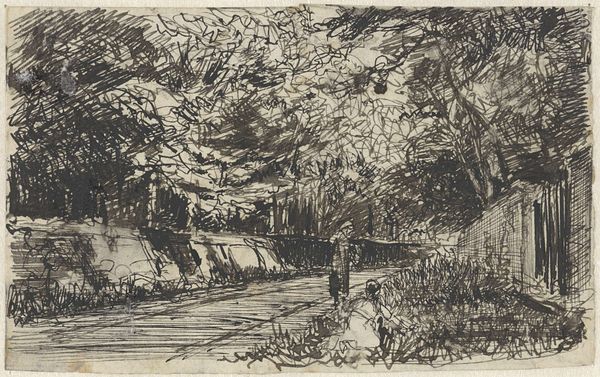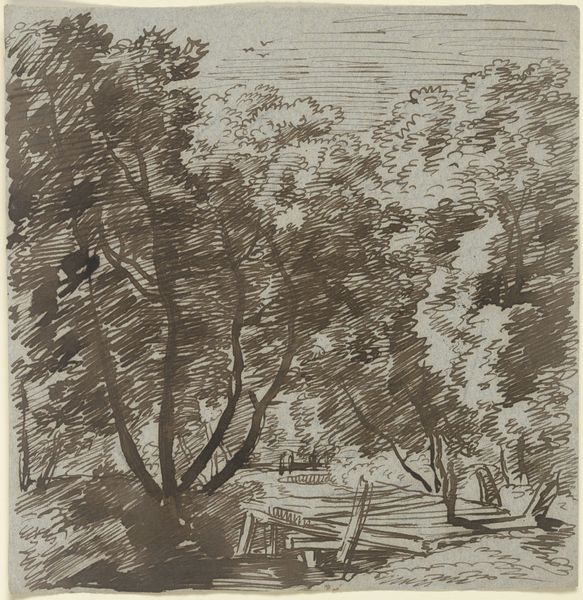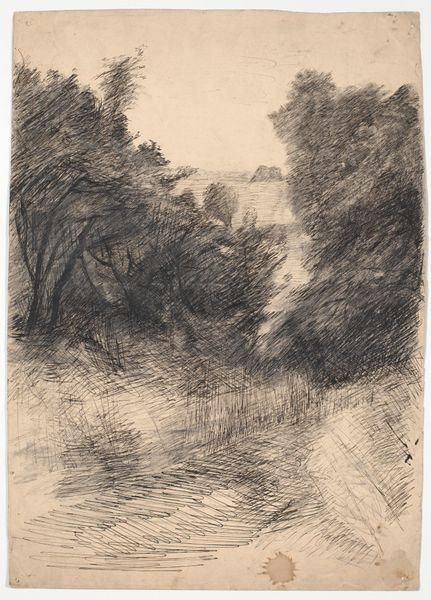
Dimensions: plate: 17.3 x 21 cm (6 13/16 x 8 1/4 in.)
Copyright: National Gallery of Art: CC0 1.0
Curator: Welcome. Here we see Edward Hopper’s "Night in the Park," an etching completed in 1921. The work demonstrates a shift into a mood of isolation even amongst the community in the space of an American park. Editor: Immediately striking, this print offers such rich textures and dramatic contrasts. There's an almost cinematic tension. It feels incredibly noir for its time, all chiaroscuro. Curator: Absolutely. Hopper's work often explores the psychological weight of modern life, and "Night in the Park" captures this sentiment. Look at how the lamplight, presumably modern, is still insufficient to fully illuminate the scene. It only isolates the figures on the bench further, making it almost like a confessional under the watch of a harsh, albeit romanticized, arboreal judge. Editor: And consider the technique. The etched lines—particularly in the trees—create a sense of depth and density, almost claustrophobia. Notice how Hopper uses these lines not just to delineate form, but also to convey mood. The park seems simultaneously inviting and forbidding. There's great care in this balanced dichotomy. Curator: Indeed. And those dark, heavy strokes of the tree are almost ominous as they arch overhead like a vaulted church roof—but a darkened one—suggesting an enduring presence against human isolation, much like those figures that cannot meet, yet remain bound to their designated benches. There's a universality to these moments he is trying to depict. Editor: The composition guides our eye beautifully, leading us from the bench in the foreground toward that ambiguous, darker background, the looming nature almost acting as a fourth wall. The textures offer a lot to process visually—which adds to the almost stifling effect—a wonderful use of form and composition. Curator: Yes, Hopper's etching technique becomes a powerful medium to relay psychological complexities. There is this palpable loneliness and yet enduring social commentary throughout all of his work that, while unnerving, makes it that much more fascinating to look into the depths of the piece. Editor: Ultimately, Hopper’s success with "Night in the Park" speaks volumes about the impact that formal manipulation has in carrying emotional information in his landscape paintings.
Comments
No comments
Be the first to comment and join the conversation on the ultimate creative platform.
